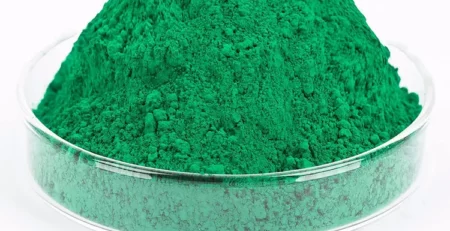How can Textile Pigment paste with Bluish Green phthalocyanine Green pigment be effectively dispersed for optimal results?
How to Effectively Disperse Textile Pigment Paste with Bluish Green Phthalocyanine Green Pigment
Introduction:
Textile pigment paste with bluish green phthalocyanine green pigment is a versatile coloring agent used to give fabrics vibrant and long-lasting colors. To achieve optimal results, it is important to properly disperse the pigment in the paste. In this article, we will explore the best methods for effectively dispersing the pigment for excellent dyeing and printing outcomes.
1. Choose the Right Base:
Start with a high-quality base material for the pigment paste. A suitable base will have good wetting properties and compatibility with the pigment. This ensures better dispersion and color distribution.
2. Pre-disperse the Pigment:
To prevent pigment agglomeration, pre-disperse the bluish green phthalocyanine green pigment in a small amount of binder or dispersing agent. This step helps break down large pigment particles into smaller ones for easier dispersing in the paste.
3. Gradient Approach:
Add the pre-dispersed pigment gradually to the base material. Use a dissolver or dispersing machine to mix the pigment into the paste. Slowly increase the mixing speed to ensure thorough dispersion. This gradient approach gradually incorporates the pigment without causing clumping.
4. Optimize Mixing Parameters:
Pay attention to mixing time, temperature, and speed. Adjust these parameters to achieve the desired dispersion. Long mixing times and high temperatures can help break down pigment agglomerates effectively.
5. Pick the Right Equipment:
Use suitable mixing equipment for dispersing the pigment. High-speed mixers or bead mills are commonly used in the textile industry to achieve fine dispersion. These machines provide intense shearing forces that break down pigment particles effectively.
6. Consider Additives:
In some cases, additives such as wetting agents or thickeners may be used to improve dispersion. Wetting agents enhance the dispersion of hydrophobic pigments, while thickeners improve the paste’s stability and rheology.
7. Test and Adjust:
Perform test runs to evaluate the dispersion quality. Adjust the dispersion process if necessary by modifying parameters, additives, or the pigmentation process. This testing ensures consistent and optimal results.
8. Quality Control:
Regularly monitor the dispersion process to maintain the quality of the pigment paste. This includes checking for color consistency, particle size distribution, and stability.
FAQs:
1. What is the role of pre-dispersing the pigment?
Pre-dispersing breaks down large pigment particles, making them easier to disperse uniformly in the paste.
2. Why is it important to choose the right base material?
The base material should have good wetting properties to ensure proper dispersion. Incompatible bases may lead to poor dispersibility.
3. Can additives be used for better dispersion?
Yes, additives like wetting agents and thickeners can enhance dispersion and stability.
4. How can I test the dispersion quality?
Perform test runs to evaluate color consistency, particle size distribution, and stability.
5. How often should quality control be performed?
Regular quality control checks should be carried out to maintain the quality of the pigment paste.
Conclusion:
Effectively dispersing textile pigment paste with bluish green phthalocyanine green pigment is crucial for achieving optimal dyeing and printing results. By following the right methods and using suitable equipment, additives, and base materials, you can ensure a uniform and vibrant color application. Remember to test and adjust the dispersion process as needed to maintain consistent quality. Embrace the world of colors and create beautifully dyed and printed textiles.
Quote: “Colors, like features, follow the changes of the emotions.” – Pablo Picasso



